 W
WIn the United States military, the Army Court of Criminal Appeals (ACCA) is an appellate court that reviews certain court martial convictions of Army personnel.
 W
WThe Army Ballistic Missile Agency (ABMA) was formed to develop the U.S. Army's first large ballistic missile. The agency was established at Redstone Arsenal on 1 February 1956, and commanded by Major General John B. Medaris with Wernher von Braun as technical director.
 W
WThe US Army Foreign Intelligence Assistance Program, was a 1960s program. One part was "Project X", a military effort to create intelligence field manuals drawn from counterinsurgency experience in Vietnam, specifically from the CIA's Phoenix program in South Vietnam, an assassination program designed to identify and "neutralize" the infrastructure of the Viet Cong. The manuals influenced the "KUBARK Counterintelligence Interrogation-July 1963", "Human Resource Exploitation Training Manual-1983" as well as intelligence manuals used at the School of the Americas.
 W
WThe Army Science Board (ASB) provides advice about army science to senior military leaders. The ASB is a Federal Advisory Committee organized under the Federal Advisory Committee Act. It is the United States Department of the Army senior scientific advisory body that was chartered in 1977 to replace the Army Scientific Advisory Panel. The ASB provides the Army with independent advice and recommendations on matters relating to the Army’s scientific, technological, manufacturing, logistics and business management functions, as well as other matters the Secretary of the Army deems important to the Department of the Army. The Secretary of the Army delegates oversight authority to the Deputy Under Secretary of the Army, who appoints the ASB Executive Director. Terms are generally three years.
 W
WThe Army Service Forces were one of the three autonomous components of the Army of the United States during World War II, the others being the Army Air Forces and Army Ground Forces. They were created on 28 February 1942 by Executive Order Number 9082 "Reorganizing the Army and the War Department" and War Department Circular No. 59, dated 2 March 1942.
 W
WAssistant Secretary of the Army is a title used to describe various civilian officials in the United States Department of the Army.
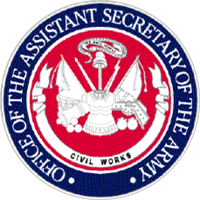 W
WThe Assistant Secretary of the Army , abbreviated ASA(CW), is an office of the United States Department of the Army responsible for overseeing the civil functions of the United States Army. The Assistant Secretary of the Army reports to the United States Under Secretary of the Army, who in turn reports to the United States Secretary of the Army
 W
WAssistant Secretary of the Army is a civilian office in the United States Department of the Army.
 W
WThe Assistant Secretary of the Army — abbreviated ASA(M&RA) — is a civilian official in the United States Department of the Army.
 W
WArmy Best Warrior is an annual competition overseen by the Department of the Army as a means of identifying and recognizing soldiers in active, Special Operations, National Guard and reserve components of the United States Army. Each year, each participating command sends their best enlisted soldier and non-commissioned officer to Fort Lee to represent their unit.
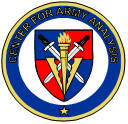 W
WThe Center for Army Analysis (CAA), formerly US Army's Center for Strategy and Force Evaluation, is a US Army organization under the Deputy Chief of Staff G-8 which is responsible for analyses that impact the Army at the strategic or institutional level.
 W
WTo reinforce the Army profession and its Ethic, the Army Chief of Staff (CSA) established the Army Center of Excellence for the Professional Military Ethic (ACPME) in May 2008. Located at West Point, New York, the wellspring of professional soldier values for more than 200 years, the ACPME was re-designated as the Center for the Army Profession and Ethic (CAPE) and realigned to fall under the command and control of the United States Army Training and Doctrine Command (TRADOC) and its Combined Arms Center (CAC) in August 2010. CAPE's objectives were to assess the state of Army as a profession and its members as professionals; to study and define through doctrine and strategic messaging the Army Profession; capture and promulgate the moral principles of the Army Ethic, Army culture, and organizational climates; inspire trusted Army professionals to live up to their sacred oaths, increase Army members’ understanding and internalization of what it means for Soldiers and Army Civilians to be members of an honored profession; accelerate professional and character development in individuals, units, and Army culture through training, education, and leader development. AR 600-100 Army Profession and Leadership specified 12 tasks for CAPE to serve the Army in leader development, critical thinking and ethical decision making based upon the moral principles of the Army Ethic. Army Doctrine Publication (ADP) 1 and Army Doctrine Reference Publication (ADRP) 1. CAPE, as the AR 5-22 Army Force Modernization Proponent for the Army Profession, Character Development, and the Army Ethic was the US Army and lead responsible for Doctrine, Organization, Training, Materiel, Leadership and Education, Personnel and Facilities (DOTMLPF) initiatives to reinforce the Army Profession of Arms, Army Ethic, and culture. In September 2019, CAPE was merged with the Center for Army Leadership at Fort Leavenworth, KS to form the Center for the Army Profession and Leadership. About CAPE,</ref>
 W
WThe chief of staff of the Army (CSA) is the service chief of the United States Army. As the highest ranking officer assigned to serve in the Department of the Army, the chief is the principal military advisor and a deputy to the secretary of the Army. In a separate capacity, the CSA is a member of the Joint Chiefs of Staff and, thereby, a military advisor to the National Security Council, the secretary of defense, and the president of the United States. The CSA is typically the highest-ranking officer on active-duty in the U.S. Army unless the chairman or the vice chairman of the Joint Chiefs of Staff are Army officers.
 W
WThe Commanding General of the United States Army was the title given to the service chief and highest ranking officer of the United States Army, prior to the establishment of the Chief of Staff of the United States Army in 1903. During the American Revolutionary War (1775–1783), the title was Commander-in-Chief of the Continental Army. In 1783, the title was simplified to Senior Officer of the United States Army. In 1821, the title was changed to Commanding General of the United States Army. The office was often referred to by various other titles, such as "Major General Commanding the Army" or "General-in-Chief".
 W
WThe commanding general of United States Army Europe (USAREUR) was formerly known as the commander-in-chief of United States Army Europe (CINCUSAREUR). Prior to 8 May 1945 the official title was Commander, European Theater of Operations, United States Army. From 1953 to 1967 the commanding general of USAREUR was "dual hatted" as commander of the Central Army Group of NATO forces in Germany. The commanding general of USAREUR is currently "dual hatted" as the commanding general of United States Army Africa.
 W
WThe Commanding General of United States Army Forces Command is the head of United States Army Forces Command (FORSCOM). In this position, he or she is in charge of approximately 780,000 Active Army, U.S. Army Reserve, and Army National Guard soldiers – 87 percent of the Army’s combat power.
 W
WComprehensive Soldier Fitness (CSF) was established in August 2008 by then-Chief of Staff of the United States Army, General George W. Casey, Jr., in an effort to address the challenges being faced due to multiple deployments required by persistent conflicts in Iraq and Afghanistan. Instead of focusing only on treatment after the issues arose, Casey wanted to also provide preventative measures to the soldiers, their families and Army civilians to make them stronger on the front end. CSF Resilience Training was created to give these individuals the life skills needed to better cope with adversity and bounce back stronger from these challenges. Renamed in October 2012 as Comprehensive Soldier and Family Fitness (CSF2), was designed to build resilience and enhance performance of the Army family—soldiers, their families, and Army civilians. Comprehensive Soldier Fitness is not a treatment program in response to adverse psychological conditions. CSF2 has three main components: online self-development, training, and metrics and evaluation. According to Army Regulation 350–53, to be published December 2013, the following are the Vision, Mission and components of CSF2:
 W
WDepartment of the Army Civilian Police are the uniformed and plainclothes civilian police officers of the United States Army. They are also referred to as DoD Police. The Department of the Army Civilian Police (DACP) are responsible for law enforcement on U.S. Army–owned and –leased buildings, facilities, properties and other U.S. Army assets. In overseas locations or in areas of concurrent jurisdiction, Department of the Army Civilian Police are responsible for the protection and policing of DOD-affiliated personnel. It is important to note that "Department of Defense Police" is a phrase that refers to any civilian engaged in police duties for the Department of Defense and its component branches of the US Armed Forces. There is no one unified agency that goes under the title "Department of Defense Police". There are several police forces that use the title "DoD police", such as the Pentagon Police, Defense Logistics Agency Police, Navy Civilian Police (NCP), Army Civilian Police (DACP), Marine Corps Civilian Police (MCCIVPOL) and Air Force Civilian Police (DAFCP).
 W
WThe Army & Air Force Exchange Service is the retailer on U.S. Army and Air Force installations worldwide. The Exchange is headquartered in Dallas, Texas, and its director/chief executive officer is Tom Shull. The oldest and the largest of the Department of Defense's exchange services is No. 61[1] on the National Retail Federation's Top 100 Retailers list.
 W
WThe Institute of Heraldry, officially The Institute of Heraldry, U.S. Army, is an activity of the Administrative Assistant to the Secretary of the Army solely responsible for furnishing heraldic services to President of the United States and all Federal Government agencies. 18 U.S.C. § 704 and permit the institute to issue directives on how military insignia are displayed, the criteria for issuance, and how insignia will be worn on military uniforms.
 W
WThe National Ground Intelligence Center (NGIC) is part of the United States Army Intelligence and Security Command. The NGIC provides scientific and technical intelligence (S&T) and general military intelligence (GMI) on foreign ground forces in support of the warfighting commanders, force and material developers, Department of the Army, Department of Defense, and National-level decisionmakers. The NGIC also manages the Army's Foreign Materiel Exploitation Program and foreign material acquisition requirements, and constitutes a single authoritative source for comprehensive ground forces threat to the Army and other services.
 W
WPM WIN-T is a component of Program Executive Office Command, Control and Communications-Tactical in the United States Army. PM WIN-T has been absorbed into PM Tactical Networks as Product Manager for Mission Networks.
 W
WThe Project Manager Force Battle Command Brigade and Below is a component of the Program Executive Office Command Control and Communications Tactical Special Projects Office in the United States Army. The phrase "brigade and below" in the name refers to the fact that operations and communications within these smaller Army units are shifting to a digital integration.
 W
WThe Rapid Equipping Force (REF) is a United States Army organization headquartered in Fort Belvoir, Virginia. The organization is charged with quickly providing Army units deployed globally with innovative government off-the-shelf and commercially available solutions that address urgent requirements within 180 days or less. The REF is able to do this through unique authorities and by maintaining a presence near the point of need. REF personnel are positioned in Iraq, Afghanistan, and Kuwait and mobile laboratories are available for quick solutions. Additionally, the REF empowers the Army at a grassroots level, enabling individual soldiers to communicate needs directly through simple request forms.
 W
WThe reorganization plan of the United States Army is a current modernization and reorganization plan of the United States Army that was implemented under the direction of Brigade Modernization Command. This effort formally began in 2006 when General Peter Schoomaker, was given the support to move the Army from its Cold War divisional orientation to a full-spectrum capability with fully manned, equipped and trained brigades; this effort was completed by the end of 2016. It has been the most comprehensive reorganization since World War II and included modular combat brigades, support brigades, and command headquarters, as well as rebalancing the active and reserve components. The plan was first proposed by the Army's 34th Chief of Staff, Eric Shinseki, in 1999, but was bitterly opposed internally by the Army. By 2020, the Army's 40th Chief of Staff was calling for transformational change, rather than incremental change by the Army.
 W
WThe structure of the United States Army is complex, and can be interpreted in several different ways: active/reserve, operational/administrative, and branches/functional areas.
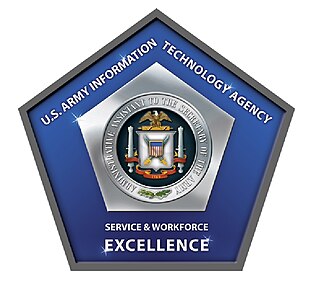 W
WThe United States Army Information Technology Agency (ITA) is one of the administrative service organizations aligned under the Office of the Administrative Assistant to the Secretary of the Army (OAA). OAA has three fundamental functions. The primary mission of the organization is to provide direct support to the Secretary of the Army and other Army political appointees. The second mission is to provide administrative support to the Headquarters, Department of the Army (HQDA). The third mission is to provide base operations support to a diverse group of Army and Department of Defense (DoD) customers. OAA is organized into four major divisions: the U.S. Army Resources and Programs Agency (RPA), the U.S. Army Headquarters Services (AHS), the U.S. Army Information Technology Agency (ITA), and the U.S. Army Center of Military History (CMH). These divisions support OAA primarily in areas of IT, logistics, training, and human resources support.
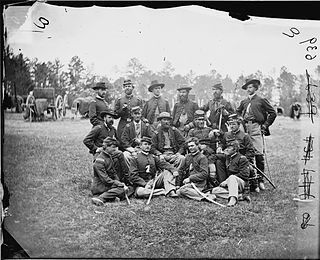 W
WThe Horse Artillery Brigade of the Army of the Potomac was a brigade of various batteries of horse artillery during the American Civil War.
 W
WThe United States Army Chemical Materials Activity (CMA) is a separate reporting activity of the United States Army Materiel Command (AMC). Its role is to enhance national security by securely storing the remaining U.S. chemical warfare materiel stockpiles, while protecting the work force, the public and the environment to the maximum extent.
 W
WThe provost marshal general is a United States Army staff position that handles investigations of U.S. Army personnel. It is the highest-ranking provost marshal position in the U.S. Army, reporting to the Chief of Staff of the United States Army. The position brings all aspects of law enforcement in the U.S. Army in a single office.
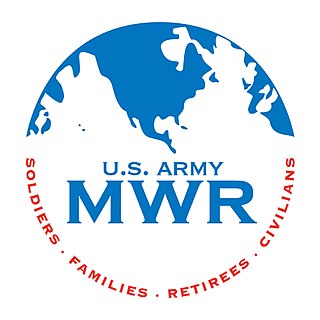 W
WThe United States Army's Family and Morale, Welfare and Recreation (MWR) Programs are executed within the Installation Management Command G9, Family and MWR Directorate, following the deactivation of the Family and Morale, Welfare and Recreation Command on 3 June 2011 in a ceremony at Fort Sam Houston. According to the organization's official mission statement, IMCOM G9 delivers "quality Family and Morale, Welfare, and Recreation programs and services supporting the readiness and resilience of the All-Volunteer Army."
 W
WThe vice chief of staff of the Army (VCSA) is the principal deputy to the chief of staff of the Army, and is the second-highest-ranking officer on active duty in the Department of the Army.